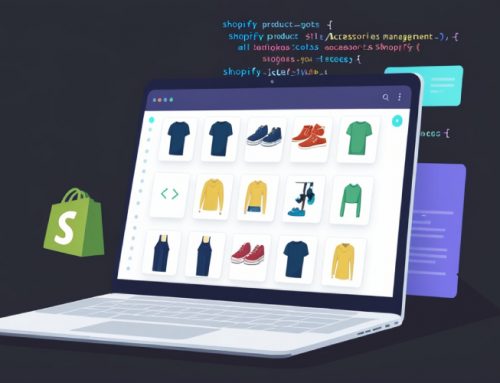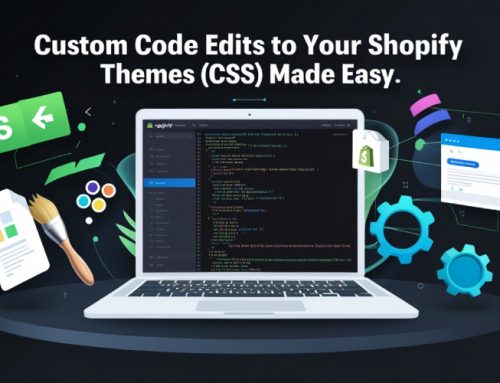Table Of Content
Identifying and Removing Unused Apps and Scripts for Optimal Website Performance
While the allure of a “scorch-and-burn” approach to website speed improvement is tempting, deleting entire sections of code can be a risky gamble. Instead, precise, targeted removal of specific code segments offers a safer, more effective path to a lightning-fast website. This article delves into the art of micro-optimizations and equips you with the tools to unlock hidden performance potential within your code.
The Numbers Don’t Lie
- 79% of online shoppers who encounter a website that takes longer than 3 seconds to load will abandon it. (source: Kissmetrics)
- Conversion rates might drop by as much as 20% for each second that a mobile website takes to load. April 2017 issue of SOASTA, The State of Online Retail Performance.
- According to research by the Aberdeen Group, 40% of users will leave a website that takes longer than three seconds to load. Even devoted clients who endure a slow experience are not immune: A mere one-second delay, or three seconds of waiting, results in a sixteen percent reduction in consumer satisfaction.
Identifying the Unused App or its Dormant Code
Scripts Loaded Twice Owing to the App
It is possible to verify if the application scripts are loading and if they are loading twice.
Using Facebook as an example, we have two scripts loaded through the social media app.
Since the scripts in this instance were most likely uploaded twice to theme.liquid, product.liquid, collection.liquid, and index.liquid, we will verify this by looking through the liquid files and removing the offending script.
On the other hand, it is likely the result of an app that was added to your website if there is an additional Facebook pixel there that you did not put. Since Facebook is a third-party software and you cannot alter or modify its script, we are powerless over these kinds of scripts. In this case, you must locate and remove the app causing the pixel code.
Solution:
- Check if an app has been uninstalled by going to the admin dashboard.
- See GSI: Minimising the Effect of Third-Party Code on Third-Party Applications.
- Eliminate the apps’ code and any extra files they may have added to liquid files.
- Examine the View source for any duplicate pixels, then change Liquid or remove the application that resulted in this JS inline insert.
Remove/Uninstall Apps (With Authorization)
You may examine an unused app through the app settings and see exactly what the “App” was used for. In that scenario, you would need to target every detail of the “App” and ask the client for permission to remove it.
Once the store owner’s account has been logged in, navigate to “Store Setting” at the bottom right. Navigate to the settings and select “Apps.” Next, a list of your apps will appear; choose the one you wish to delete.
Looking For Expert Shopify Speed Optimization And Other Services Get In Touch
Review Liquid File to Find Unused Apps
Review App Dependency
Examine your theme.liquid file (for an example of the app code)
Upon installation, apps could add a few files to your Shopify theme. You should remove Shopify app files added to your theme and unnecessary apps. Performance during loads can be significantly impacted by third-party code.
Remove App Scripts
Examine the snippet file and see whether any app files are included in the theme.liquid code.
For instance:
Simply launch your theme. Reopen the liquid file and delete the line that reads,
The pace of websites is slowed down by third-party apps since they execute numerous scripts and files outside our control. We cannot alter these files, but we can load them in response to specific parameters, such as page scrolling.
For instance:
We can run the application conditionally if it is only used on a specific page or template at that moment or not on any pages.
Check all the modifications and mistakes.
Open the Shopify website after saving the files. Walk around the shop and, if there is an error, see the console in your browser.
Replace Apps with Custom Coding :
- Banner App: It has been found that banners to be displayed on times shopify sites are using the app. We recommend using custom code to achieve such features.
- Replacement of App with Custom Meta Fields: Cross Sell or You may like an app: Similarly on times for upsell and cross-sell or to display some sets of products apps are used. We recommend that we use Metadata and populate product data then apply some custom code to display these products. This will help reduce JS and as the section will not be dependent on an app will not impact site speed.
Read this Blog and Find:- Replacement of App with Custom Meta Fields
- SEO schema App: We can use metadata to populate schema data and use custom coding in liquid to achieve the desired results.
Benefits of Unused Code Deletions
By implementing targeted code deletions and micro-optimizations, you can reap the rewards:
- Reduced bounce rates: Keep your visitors engaged and prevent them from clicking away in frustration. (Kissmetrics)
- Improved conversion rates: Turn website visitors into paying customers with a seamless and speedy experience. (Google)
- Boosted SEO rankings: Google loves fast websites, as evidenced by their ranking algorithms, and higher rankings mean more organic traffic.
- Enhanced user experience: Happy visitors come back for more, and that translates to brand loyalty and business growth, the ultimate goal for any website.
Conclusion: Insights Unleash Efficiency
By leveraging “Page Speed Insights,” website owners can identify any unused applications that may be slowing down their Shopify website. Additionally, conducting a thorough analysis of third-party JavaScript allows for identifying and resolving any potential performance bottlenecks. These strategic actions enable website owners to optimize their Shopify website, improving operational efficiency and enhancing user experience.
By analyzing the theme.liquid file, website owners can also identify any conflicts between different apps or scripts affecting performance. Additionally, optimizing third-party JavaScript can help reduce page load times and improve overall site speed, leading to higher search engine rankings and increased customer satisfaction.
Furthermore, regularly monitoring website analytics and user feedback can provide valuable insights into areas that need improvement, allowing for continuous optimization and enhancement of the online shopping experience. Additionally, implementing responsive design techniques can ensure the website is accessible and user-friendly across different devices, further enhancing customer satisfaction and driving conversions.
You can request an audit to see if custom coding can replace any apps.
Read and Find:- Marketing strategies for Apps and speed









